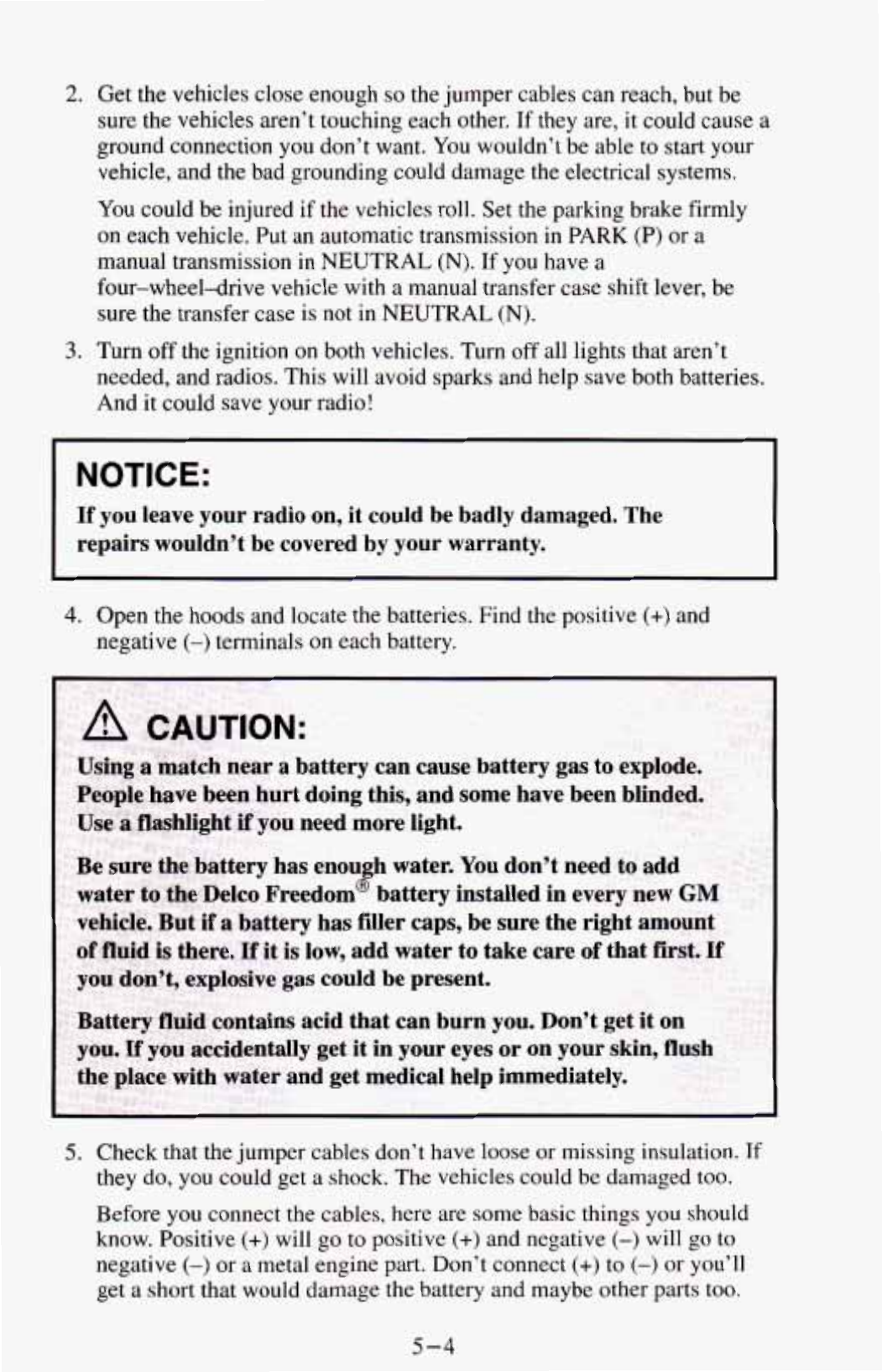
2.
Get the vehicles close enough
so
the jumper cables can reach, but be
sure the vehicles aren’t touching each other.
If
they
are, it could cause a
ground connection you don’t want. You wouldn’t be able to start your
vehicle, and the bad grounding could damage the electrical systems.
You
could be injured if the vehicles roll. Set the parking brake firmly
on each vehicle. Put an automatic transmission in PARK
(P)
or a
manual transmission in NEUTRAL (N).
If
you have a
four-wheel-drive vehicle with
a
manual transfer case shift lever, be
sure the transfer case is
not
in NEUTRAL (N).
3.
Turn off the ignition
on
both vehicles. Turn off all lights that aren’t
needed, and radios. This will avoid sparks and help save both batteries.
And it could save your radio!
-
~-
NOTICE:
If
you
leave your radio on,
it
could
be
badly damaged.
The
repairs wouldn’t be covered
by
your
warranty.
4.
Open the hoods and locate the batteries. Find the positive
(+)
and
negative
(-)
terminals
on
each battery.
5.
Check that the jumper cables don’t have loose or missing insulation.
If
they do,
you
could get a shock. The vehicles could be damaged too.
Before
you
connect the cables, here are some basic things
you
should
know. Positive
(+>
will go to positive
(+)
and negative
(-)
will go to
negative
(-1
or a metal engine part. Don’t connect
(+)
to
(-)
or
you’ll
get a short that would damage the battery and maybe other parts too.
5-4


















